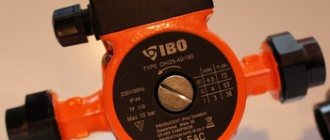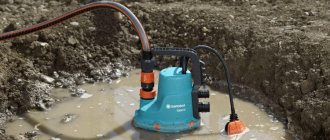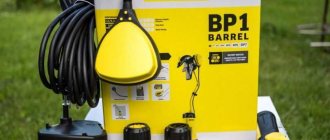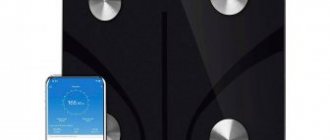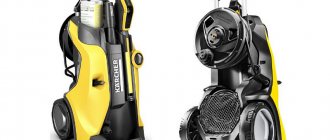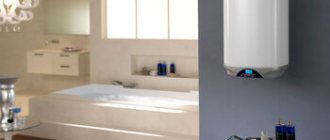It must be powerful and productive enough so that the water pressure is stable at all water intake points in the house.
How to choose a pump for a well?
What technical characteristics are paid attention to, and which ones do not play a key role in operation?
In the article we will try to answer these questions, and a short checklist with basic selection criteria and a rating of the best well pumps according to the 2021 version in price/quality ratio.
Rating of the TOP 15 best pumps for wells in 2021
| Place | Name | Price |
| TOP 3 best well pumps by price/quality for 2021 | ||
| 1 | GILEX Water cannon PROF 40/50 | Find out the price |
| 2 | VORTEX CH-100V | Find out the price |
| 3 | BELAMOS 3SP 60/1.8 | Find out the price |
| TOP 3 best surface pumps for wells | ||
| 1 | GILEX Jumbo 50/28 Ch-18 | Find out the price |
| 2 | VORTEX ASV-370/2 H | Find out the price |
| 3 | Metabo P 3300 G | Find out the price |
| TOP 3 best submersible pumps for wells up to 20 m | ||
| 1 | VORTEX VN-15V | Find out the price |
| 2 | KARCHER BP 1 Barrel | Find out the price |
| 3 | LIVGIDROMASH Baby BV-0.12-40-U5 10 m | Find out the price |
| TOP 2 best submersible pumps for wells up to 30 m | ||
| 1 | GILEKS Water cannon PROF 55/50 A df | Find out the price |
| 2 | Daewoo Power Products DBP 1800 (750 W) | Find out the price |
| TOP 2 best submersible pumps for wells up to 50 m | ||
| 1 | VORTEX CH-60 | Find out the price |
| 2 | Aquario ASP 1E-55-75 | Find out the price |
| TOP 2 best pumps for wells with overheating protection | ||
| 1 | Grundfos SBA 3-45 A | Find out the price |
| 2 | BELAMOS TF3-80 | Find out the price |
What to look for when purchasing
You need to choose a submersible pump for a well based on the type of water intake. The vibrating device creates a noticeable pulsation of water pressure and produces significant noise. It is used mainly in wells. Vibration in the well can lead to silting of the entire system and deterioration in the quality of the supplied water.
It is better to purchase a traditional centrifugal unit with impellers on a shaft mechanism. It will connect to a single-phase network, do an excellent job of pumping liquid and will not disturb the owners and neighbors with a pronounced sound effect. But for cleaning the well, it is better to buy an inexpensive vibrator.
If the well has a low flow rate or the owners need to supply a small volume of water, it makes sense to purchase a vortex unit. In financial terms, it is much cheaper than a centrifugal device
For correct operation, the pump must be easily immersed in the well pipe. To avoid problems with this, you need to carefully study the technical documentation, remember the parameters of the well and select a device of a suitable diameter.
The quality of the water in the well is also of great importance. Household submersible devices are designed to work only with clean water. If the liquid contains fibrous substances, insoluble fragments or sand, you should find out their volume and buy a pump with the appropriate capabilities.
Standard models cope with pumping a flow containing no more than 20-40 g/m3 of additives. More durable units can easily pump water containing up to 100-150 g/m3 of solid components.
Performance shows how much liquid a pump can pump in a certain unit of time. This volume should cover the total water needs of the household, including household costs and irrigation of the land. Our recommended article will tell you how to choose a pump for watering your garden.
The performance characteristics must be comparable to the intensity of the natural presence of water in the well. Otherwise, there is a risk of pumping out all the liquid and leaving the equipment in a dangerous dry running situation. If the pump does not have built-in protection against running dry, it may burn out and fail.
The pump will work properly, for a long time and without failures, if there is a gap of 1-3 cm between the walls of the well line and its body. When purchasing equipment, this point must be taken into account
You should not buy nameless devices or units from little-known manufacturers. Typically, such models have poor operational endurance and cannot withstand basic loads. Finding components or key components for them is problematic, and there are simply no branded service centers in Russia.
It is not possible to use the warranty or correctly repair a broken device. As a result, you have to throw it away and again spend money on buying a new pump.
Products from well-known brands exhibit wear resistance. Good deep-well pumps rarely break down and almost always fully fulfill their stated service life. Warranty service points are located in most major populated areas of the country and it is not difficult to repair equipment in a timely manner.
How to choose a pump for a well?
Well pumps are centrifugal, vortex and screw. Devices of the first type are inexpensive, but are only suitable for wells no more than 50 meters deep. Vortexs are capable of lifting water to great heights, but are also sensitive to water quality.
The most functional are considered to be auger devices that are capable of lifting water with a high sand content to the surface.
In addition to the pump type, attention is paid to the following technical characteristics:
- Productivity . This criterion must correspond to the rate at which the well is filled with water, so that the pump does not pump water out of the wells faster than it enters.
- Maximum pressure . This criterion refers to the height to which the pump can lift water.
- Immersion depth . In this case, we mean diving under water, and not into a well in general. For example, if the well depth is 50 meters, and the distance from the surface to the water surface is 20 meters, then the maximum immersion depth should be 30 meters.
- Cord length . For other pumps this indicator does not play a key role, but in the case of well devices, the cable length must correspond to the cable depth.
It is also desirable that the pump be provided with protection against overheating and protection against dry running. Most modern models have such functions, so choosing the right device will not be difficult.
The best surface well pumps for clean water
Surface pumps attract users with their compact size and ease of use. They allow you to extract water from wells 7-10 m deep. It is better to install such pumps in separate rooms, because they make decent noise. Experts liked the following surface installations.
ESPA Aspri 35 4M N
Rating: 4.9
High quality and an excellent set of technical parameters allowed the Spanish pump ESPA Aspri 35 4M N to take first place in our rating. The manufacturer made all critical parts from stainless steel, which had a positive effect on the reliability and durability of the device. The design includes an oil-filled chamber, which is responsible for lubricating the shaft seal. Experts highly appreciated the presence of a self-priming valve in the pump, which provides a suction height of 9 m. The pump has thermal protection for a single-phase motor, as well as automatic restart. The capacity of the surface pump is 9 cubic meters. m/h.
Users speak flatteringly about the power, reliability and quiet operation of the pump. The disadvantage of the model is the high price.
Advantages
- power and performance;
- reliability and durability;
- high-quality assembly;
- silent operation.
Flaws
- high price.
Pedrollo JSW 3AL-N
Rating: 4.8
The high-quality surface pump Pedrollo JSW 3AL-N takes an honorable second place in the rating. The model demonstrates the best technical parameters. This is a high throughput (9.6 cubic m/h), high pressure (62 m), and significant immersion depth (9 m). Unlike the winner, some parts are made of cast iron, such as the body. It should be noted that metal surfaces are reliably protected by a high-quality paint and varnish coating. The model is somewhat inferior to the leader in weight (27 kg) and overall dimensions. The device is easy to install and maintain.
Domestic users have no particular complaints about the operation of the Italian pump. It is efficient and versatile, allowing you to organize water supply at home and water the garden with equal success.
Advantages
- high performance;
- high-quality assembly;
- presence of an ejector;
- reliable protection against corrosion.
Flaws
- heavy weight;
- high price.
Types of pumps
As of 2021, the market knows 5 types of devices that are designed for pumping water or other purposes:
- Submersible. Designed for submersion.
- Deep. They are used to extract water at great depths.
- Centrifugal. Powered by an electric motor.
- Vibrating.
- Superficial.
The first type allows the owner to pump water at great depths, up to 80 meters. The main feature is that when performing work, the device completely goes under water. Electrical energy is obtained through a long and carefully insulated cable.
Main advantages:
- Such devices are equipped with more power, since part of their work occurs under water. Productivity and pressure are several times higher than standard options.
- They can work in almost any situation, which makes them universal.
- They do not overheat, since water serves as both a extracted resource and the main element of the cooling system at the same time.
- Their work is practically inaudible, since the device is located under the water column, where the sound is muffled.
- They are not afraid of water getting into the main elements. This is due to the fact that the pumps have a tight seal, which allows them to operate without failure for a long period.
- Not sensitive to sudden temperature changes. Because the temperature of the water where they are located never changes.
How does installation work?
All submersible devices, regardless of model, are installed in the well shaft. The main thing that is important to pay attention to is that the dimensions of the device must match the diameter of the main pipe. The pump must not be allowed to run freely. To do this, you should read the minimum dimensions of the well in the device passport. This way a person will protect himself from possible technical malfunctions.
Before installing the pump, it is important for a person to pre-pump and clean it. This must be done until clean water comes out, without sand or other impurities.
- The first thing to do is to fix the check valve, which is located on the pump nozzle. This must be done because the valve will not allow the liquid to drain after the device is turned off. In addition, a person does not have to monitor the filling of the chamber.
- It is important to install an additional filter on the suction pipe, which is shaped like a bowl. Thus, the chance of penetration of silt or other impurities is reduced to zero.
- A pressure hose is connected to the reversing valve. This will allow water to exit the well.
- The opposite end is connected to the inside of the adapter, in some cases it can be connected to a hydraulic accumulator.
- The electrical cable, using special clips or ties, must be connected to the discharge hose.
- At the end of these actions, it is important for a person to draw a polymer rope. Thanks to this, the pump will be fixed in one position. To do this, appropriate brackets are used.
- At the final stage, the finished device is lowered inside. If all rules are followed, the user will not encounter any difficulties. To prevent the wire from “overlapping” with the polymer rope, it is important to secure them with special clips.
After the device reaches a certain depth, it is necessary to securely fix the rope.
Deep well pumps. Peculiarities
This model is designed to lift water from a depth of more than 10 meters. Most often, this option is used in artesian wells.
The device itself consists of two main elements:
- The electric motor, which is located at the bottom of the housing and is equipped with high-quality waterproofing. This increases the efficiency of the device and extends its service life.
- The second main part is the multi-stage pumping part. It consists of such elements as: a drive shaft, blade bends and guide wheels. Thanks to these parts, the device can function properly and avoid critical temperature increases.
Due to the fact that the design of such devices is more thoughtful, such models are less susceptible to wear, which increases their reliability and increases their service life. For a person who owns a country house, this is the most correct option.
Main advantages:
- Such pumps are equipped with greater power;
- Small dimensions and low weight make them universal tools for almost any situation. Thanks to their small diameter, they can be used in narrow spaces.
- They have an increased service life.
- The vibration level is within an acceptable value, which does not affect the well.
How to choose a deep-well pump
- It is best to buy models that are equipped with built-in automation. Because such options will automatically turn off if a lack of water is detected. This will prevent sand and dirt from getting in.
- Also, a good option is a device with a durable coating that will reliably protect the pump from various mechanical damage associated with falls, etc.
- When choosing between two almost identical products, it is important to give preference to the one that has higher resistance to various stains. Thanks to this, the device will last much longer than analogues.
- In addition, we must not forget that it is necessary to choose not according to additional functions, but according to suitability for a specific well. All parameters must be met, only then the pump will serve for a long time and with high quality.
Main operating tips
- It is not recommended to start the device while outside the working space (well).
- Before lowering the device down, it is important to carefully examine the cable for possible cracks, which could affect the quality of the product.
- The main task before turning on the pump is to shut off the water supply.
- It is important to place safety valves on the main body, thanks to them the product will not be afraid of water hammer.
- The product cannot be placed almost at the bottom of the well. The minimum distance is 1 meter from the surface. This way the water quality will be at the highest level.
Centrifugal
Models of this type are equipped with a powerful electric motor, to which is attached a wheel with blades directed in the opposite direction. This is necessary for correct operation. So the engine begins to rotate the wheel, and the blades gradually generate centrifugal force. Eventually, a space with low pressure begins to appear in the middle, and at the edges it is high. Because of this difference, water is sucked into the center and begins to flow into a pre-prepared hose.
Advantages of such equipment:
- Uninterrupted and long-term operation with large amounts of water.
- High reliability, quality and universal use. So some models can be used not only for wells, but for pumping hazardous substances.
- The vibration produced does not have a negative effect on the well.
Flaws:
- High prices for quality models.
- To carry out installation, you will need help or advice from a specialist.
- Before performing work, the device should be filled with liquid.
- If the water supply is small, then the efficiency will be low.
Vibration devices intended for use in wells
Most often, this is budget equipment, which is in high demand among owners of summer cottages. Such devices are highly economical and simple in design. The main application is sand wells, the depth of which does not exceed 50 meters. At the same time, it is important that the need for water is not very large.
The main element of the equipment is a rubber membrane. When vibration begins to act, the product bends, creating a pressure difference that is sufficient to pump water. The device does not have any rotating elements, which are often the “Achilles heel” of any unit. Therefore, such pumps do not require proper monitoring, are reliable and can last the maximum specified period.
Advantages:
- Portability.
- High performance indicators;
- The pumps are unpretentious in maintenance;
- Price.
Flaws:
- The risk of contaminated elements and substances entering is very high. Therefore, the water quality is low.
- They cannot function fully in areas with frequent power fluctuations.
Surface models for wells
These devices always remain above the water, no matter what conditions they are used in, even under the roof of a house or barn. In addition, they have a low price and are easy to use. Pumping is carried out using a hose lowered into the well.
Advantages:
- Low cost.
- Mobility. If a person needs to, he can fix the structure on a cable or take it to a room or place with limited space.
- The efficiency of the equipment is high, while energy consumption is low.
- It is located in the owner's line of sight, which makes it easy to monitor the current condition.
Flaws:
- Small suction depth, which does not exceed 10 meters;
- The engines are not equipped with moisture protection;
- When the pump is running, it creates a lot of noise;
- Sensitive to temperature changes.
How to operate surface equipment
- An excellent option would be if the owner builds a special canopy that will protect the mechanism from moisture;
- To reduce the risk of water freezing in winter, it is important to insulate the device during this period;
- The best option would be to transport the pump to a heated space. To do this, you can build a caisson and place it there.
By depth of immersion
Up to 10 meters
Aquarius BCPE 0.5-50U
pros
- Spectacular design
- Power
- Silent operation
- Performance
- Reliability
Minuses
- High power consumption
From 10,900 ₽
Reliable device for shallow wells. The case is made of stainless steel. Equipped with a fairly long power cable, which allows you to use it away from the power source. Additionally, there is a soft engine start system and overheating protection. The centrifugal pump is installed in a vertical position to a depth of up to 10 m.
GILEX Jumbo 70/50 P
pros
- Powerful
- Provides good water pressure
- Unpretentious
- Easy to install and connect
Minuses
- Noisy when working
From 6,900 ₽
An excellent device with good power, providing strong pressure and having a large throughput. Capable of working at three water points at once. It lifts water from a depth of up to 9 m. The pump type is surface. It is better to place it horizontally next to the power source, since the wire is only 1.5 m long.
10 to 15 meters
UNIPUMP ECO VINT 2
pros
- Nice appearance
- Cheapness
- Long soft cable with thick rubber insulation
- Does not burn out from power surges
Minuses
- Too much lubricant in the device
- Poor quality assembly
From 4,800 ₽
An inexpensive, thin pump that can operate almost silently. An immersion depth of up to 15 m is provided. Provides a pressure of 90 m. There is a built-in filter that purifies the water from all particles larger than 1 mm. A special feature of the model can be considered a high-quality power cord 20 m long, which is covered with thick insulation.
Owner 4NGV-30/100
pros
- Cheapness
- Good pressure
- Relatively light weight
- Long power cord
Minuses
- The bolts are rusting
From 4,400 ₽
Submersible well model with a capacity of 1.8 cubic meters. m/hour. At a diving depth of up to 15 m, it is capable of providing a pressure of up to 100 m. Rated power is 430 W. It is quite enough for general needs in a country house or in a private house. The pump diameter is 98 mm, which makes it very compact. Installed vertically in the well, the weight does not exceed 8.6 kg.
From 15 to 20 meters
UNIPUMP MINI ECO-2
pros
- Quiet operation even at high power
- Long power cord
- Handles sand and silt
- Gives good pressure
Minuses
- Quite heavy
From 8,200 ₽
A relatively inexpensive model with a built-in starting capacitor and thermal relay. These components will prevent the pump from being damaged even if used incorrectly. The power cord is really long: 30 m. Enough for comfortable use even far from a power source. The device has a throughput capacity of 3 cubic meters. m/hour, which will supply water to a small house.
Owner 3NGV-25/70
pros
- Cheapness
- Narrow diameter
- Suitable for well with adapter
- Supplies several taps at once
Minuses
- Quite a short cord
- Difficult to get spare parts
From 4,000 ₽
The best pump for a well 20 meters deep. A good option for a private home. Even when using a large number of devices and analysis points, the pressure is decent. Dry running is strictly not recommended. In this mode, the device will not last long. And it will be difficult to get components for repairs.
From 20 to 30 meters
GILEX Water cannon PROF 55/75
pros
- Long cable
- Well-developed hydraulic part
- Doesn't make noise
- Good pressure
Minuses
- No dry running protection
- No check valve
From 10,300 ₽
A pump for creating a complete water supply system in the house. Works stably at high power. Capable of diving to a depth of 30 m. The maximum pressure reaches 75 m. It is used for pumping clean cold water. Filters out all large particles larger than 1.5 mm.
UNIPUMP ECO 2
pros
- High performance
- Quiet operation
- Stainless steel housing
- Convenient packaging
Minuses
- There is no plug on the electrical cable
From 9,200 ₽
Quite a heavy pump for diving to a depth of 30 m. Weight is 17 kg. So it is best to hang it on a stainless steel cable. It pumps water quite quickly, so it is not recommended to install it in wells with small volumes of water. It is also worth considering increased sensitivity to sand in water. Excessive maintenance can quickly damage the device. In this case, it is better to use a screw model.
From 30 to 40 meters
GILEX Water cannon PROF 40/50
pros
- Uninterrupted operation for a long time
- Quiet
- Good pressure
- Relatively low price
Minuses
- Difficulties with service centers
From 8,500 ₽
An excellent submersible pump for wells and water supply from wells. This modification is suitable even for polluted waters with a lot of sand. The device is capable of pumping such water through itself without damaging itself or reducing the quality of fluid transmission. The manufacturer indicates that the device can last about 10 years. But in practice this rarely happens, and service centers are reluctant to take on this model.
VORTEX CH-60V
pros
- High power
- Good pressure
- I can't hear how it works
- Large lifting depth
Minuses
- To connect the hose you will need special adapters
From 4,900 ₽
A budget model with the ability to lift water from a depth of up to 35 m. The pump power is 370 W, which allows it to pump up to 1500 liters of water per hour. Water intake in this model is carried out in the middle, between the engine and the impeller block.
From 40 meters
UNIPUMP ECO MIDI-3
pros
- Great diving depth
- Cheapness
- Compactness
- Not bad power
Minuses
- Short power cord
- Not suitable for warm water
From 6,700 ₽
An inexpensive pump that can be submerged to a depth of 100 m. With a power of 750 W, it provides a maximum head of 92 m. The throughput capacity is also at a good level of 3 cubic meters. m/hour. Allows you to quickly fill containers or provide a small home with water.
VORTEX CH-135
pros
- Stainless steel housing
- Power
- High water rise
- Nice design
Minuses
- High price
From 14,600 ₽
The rating of deep well pumps is completed by a device for organizing water supply in a country house. Capable of quickly and evenly lifting water from a great depth of 50 meters. For ease of immersion or lifting, special holes for the cable are provided in the pump cover. But because of its power, the model stands out with an impressive power consumption of 1800 W.

